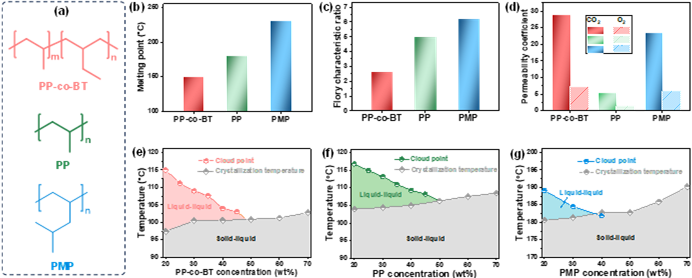Poly(propylene-co-1-butene) membranes: Unlocking versatility for advanced applications
Poly(propylene-co-1-butene) (PP-co-BT) is a promising material for membrane separation, due to its greater flexibility, reduced melting point and lower crystallinity relative to other polyolefins including polypropylene and poly(4-methyl-1-pentene). Nevertheless, employing PP-co-BT in membrane separation poses a challenge due to the limited understanding of its thermodynamic and kinetic behavior in solution, as well as the lack of the appropriate means of optimizing membrane morphologies for specific applications. In this study, we aim to address these challenges by reporting the preparation of PP-co-BT membranes via the thermally induced phase separation (TIPS) process using soybean oil and dibutyl phthalate as mixed diluent. The thermodynamic phase diagram demonstrates a liquid–liquid phase separation mechanism. By employing an isotropic cooling condition, we fabricate symmetric membranes with uniformly distributed bi-continuous pores. These membranes are subsequently coated with a mussel-inspired coating to achieve Janus wettability, enabling efficient separation of oil-in-water emulsions. Furthermore, we demonstrate the ability to produce PP-co-BT membranes with gradient or asymmetric porous structures by subjecting the TIPS process to temperature or concentration gradients. These gradient or asymmetric membranes hold promise for specific applications such as the removal of microplastics from water or as oxygenation membranes. This study showcases the potential of PP-co-BT in membrane separation, offering insights into the fabrication techniques and the versatility of PP-co-BT for various applications.

10.1016/j.cej.2023.146699
.png)